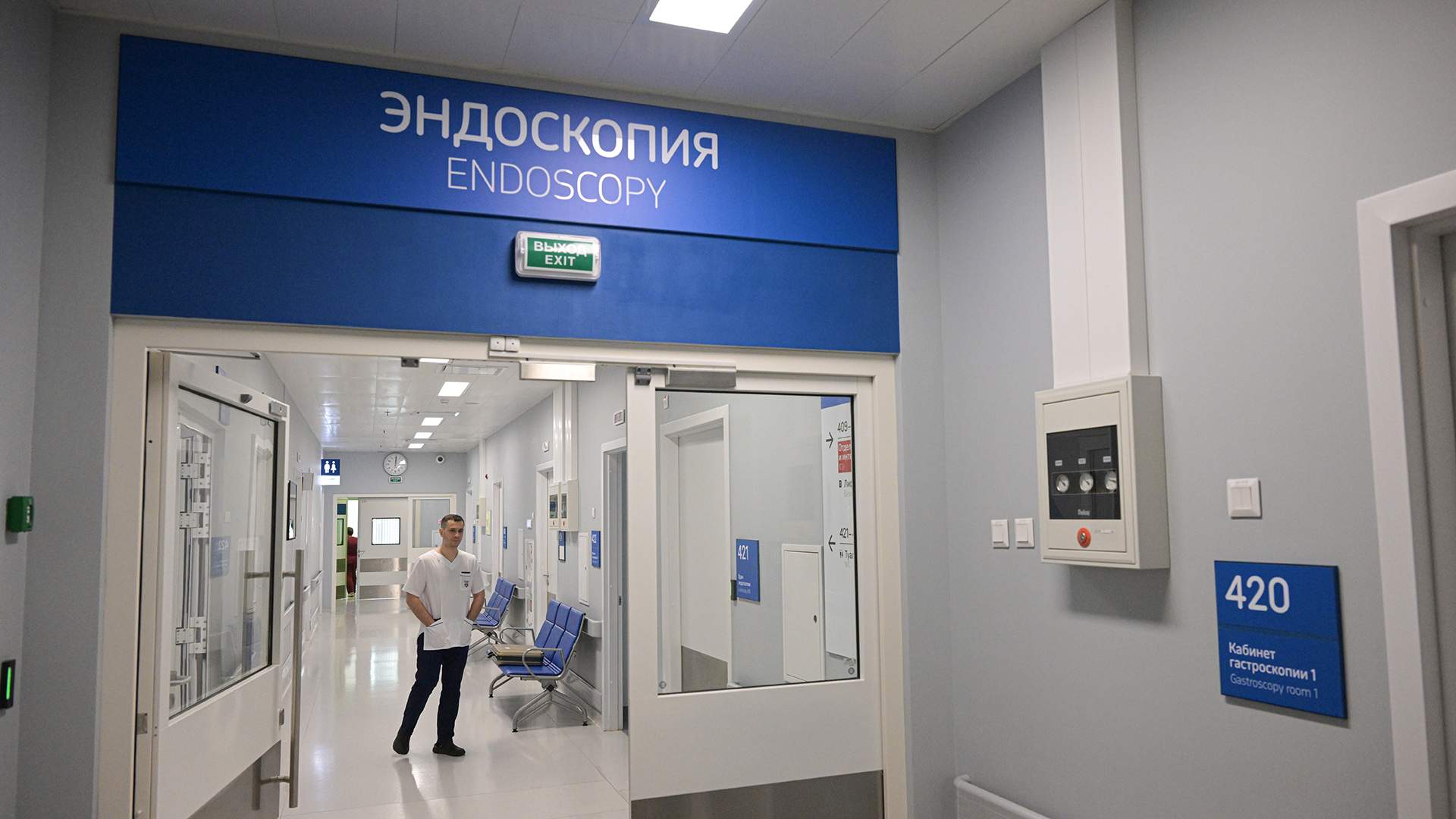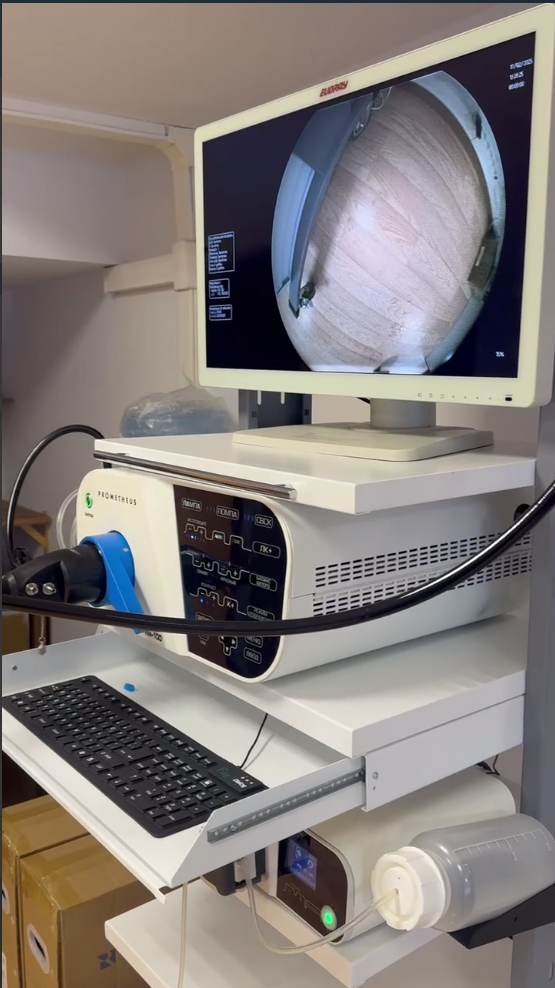- Статьи
- Science and technology
- Internal research: scientists have developed the first domestic endoscope
Internal research: scientists have developed the first domestic endoscope

Russian scientists have created the first domestic endoscope with improved properties. Its additional advantage was called the chromoendoscopic module, which significantly improves the visualization of pathologies and helps to more accurately diagnose gastrointestinal diseases. According to experts, the technology will be in demand — doctors need import-independent solutions that can be adapted to specific healthcare tasks, including training neural networks based on domestic clinical data. In general, there are still a number of difficulties in the implementation of Russian equipment in clinical practice, the experts emphasized.
The first Russian endoscope
Russian developers with the participation of St. Petersburg State Electrotechnical University "LETI" named after V.I. Ulyanov (Lenin) have developed the first domestic endoscope. As the authors of the project told Izvestia, today endoscopic examinations have become one of the most common types of high-tech medical diagnostics, which is associated with a high level of information content, the possibility of detecting oncological diseases and neoplasms in the early stages. Due to the withdrawal of foreign companies from the Russian market, there is an urgent need for import substitution.
— The team of the TV department, together with the Prometheus Group of companies, developed the first domestic endoscope. The device will be introduced to the Russian market of high—tech medical equipment," Natalia Obukhova, Dean of the Faculty of Radio Engineering and Telecommunications (FRT), Head of the Department of Television and Video Engineering (TV) at St. Petersburg State Technical University LETI, told Izvestia.
Endoscopy is a diagnostic method that allows an examination of internal organs without surgical intervention. For this purpose, an endoscope is used, which is a special flexible tube equipped with a camera and a light source at the distal end. The device allows the doctor to see the mucous membrane of the organs on the screen.
The specialists have created a video module with an LED light source for image generation, a video processor for signal processing, software to enhance the information content of the generated image, as well as to implement all service functions, including maintaining a patient database.
One of the important steps of this work was the introduction of a chromoendoscopic module into the new endoscope to expand the device's functionality. Virtual chromoendoscopy, that is, a method of examining the organs of the gastrointestinal tract, in which the mucous membranes are stained with contrasting dyes for accurate visualization of pathological areas, is an important direction for increasing the diagnostic value of images presented to the doctor, the developers said. This method simplifies the diagnosis of gastrointestinal pathologies in the early stages.
— All top foreign manufacturers of endoscopic equipment, such as Olympus and Storz, have virtual chromoendoscopy technologies, but this is, of course, classified information. We have developed our own innovation, which in some aspects even surpasses existing solutions, as it includes four image processing modes. This includes a unique mode that provides a combination of optimal color contrast while maintaining the natural color gamut," Natalia Obukhova emphasized.
What is the special feature of the first Russian endoscope
The developed endoscope allows you to visualize the area under study with a diameter of up to 5 cm with a viewing angle of 140 degrees at a distance of 10 mm and has 4 imaging modes with a system for highlighting the structure of capillaries. In the first mode, the natural color of the tissues is preserved, which helps to focus attention on the mucous membrane and the boundaries of inflammatory processes. In the second and third modes, changes are made to the color balance and contrast is increased, which improves the visibility of the vascular pattern and tissue relief. The fourth mode combines the advantages of the previous ones, increasing the local contrast and equalizing the brightness, which makes it possible to more clearly identify pathological areas.

At the moment, a software module is being developed for the early diagnosis of intestinal gastric metaplasia (a precancerous condition associated with negative changes in the cells of the gastric epithelium). This will allow for differential diagnosis and increase the effectiveness of disease detection. As part of this work, a unique database of images of intestinal metaplasia of the stomach and a model for detecting foci of this disease have already been created.
The development of the first domestic endoscope with a chromoendoscopy system is not just a response to the problem of import substitution. This is a foundation for the future: a technological platform has been created that is open to the integration of intelligent systems and AI analytics, said Albert Rizvanov, head of the Center for Excellence "Personalized Medicine" at Kazan (Volga Region) Federal University, corresponding member of the Academy of Sciences of the Republic of Tatarstan.
— Unlike closed solutions from foreign manufacturers, the Russian device can be adapted to specific healthcare tasks, including training neural networks based on domestic clinical data. This is especially important for early diagnosis of cancer, where speed and accuracy of decisions are critical. This flexibility opens up prospects for creating world—class medical solutions based on our own technologies," he said.

Foreign solutions are closed systems, the cost of which consists not only of the cost of equipment, maintenance, repair and software, but also of the cost of delivery and customs payments, which reaches several tens of millions of rubles, said Evgeny Alkhanov, CEO of EVA LAB, market expert at NTI Helsnet. A fully Russian solution will reduce the cost of both final equipment and maintenance.
Import substitution in medicine
As Izvestia previously reported, according to the Ministry of Industry and Trade, Russian medical devices were able to occupy only slightly more than a quarter of the country's medical equipment market. Currently, the production of X-ray machines and glucose meters has been established, but there are no, for example, domestic magnetic resonance imaging machines.
— The situation with import substitution is still quite difficult. It's not just about financing the development of domestic technology, its promotion, but also about the distrust of some doctors towards it. They are used to working on devices from companies such as Siemens, Toshiba, GE, and so on, and the level of trust in them is extremely high. We should not forget about Chinese manufacturers, who are also actively introducing themselves into the Russian market, they benefit from functionality and low prices," a lecturer at the Department of Medical and Technical Management of the Moscow State Technical University told Izvestia. Bauman Alexander Popov.
Despite the fact that serious steps have been taken for more than a decade to increase the competitiveness of the domestic medical industry, the desired result in this area has still not been achieved, says Stanislav Stragnov, head of the Laboratory for the Analysis of public health indicators and digitalization of healthcare at MIPT.
— By and large, in the serious high-margin segments of the medical equipment market, Western companies still dominated. We haven't been able to catch up yet. The only thing is that Chinese manufacturers have been added, but, as a rule, they do not provide the same level of quality, safety and characteristics as the best world samples. And the situation will not change overnight, because this requires systematic work, including with personnel, so that leading universities can connect with production facilities and new production facilities can be opened," he said.
At the same time, the situation is much better in the field of software, the expert noted. For example, using artificial intelligence technologies. In addition, the state and the regions purposefully support such initiatives, the expert concluded.
Переведено сервисом «Яндекс Переводчик»






